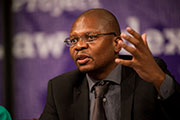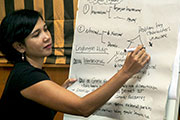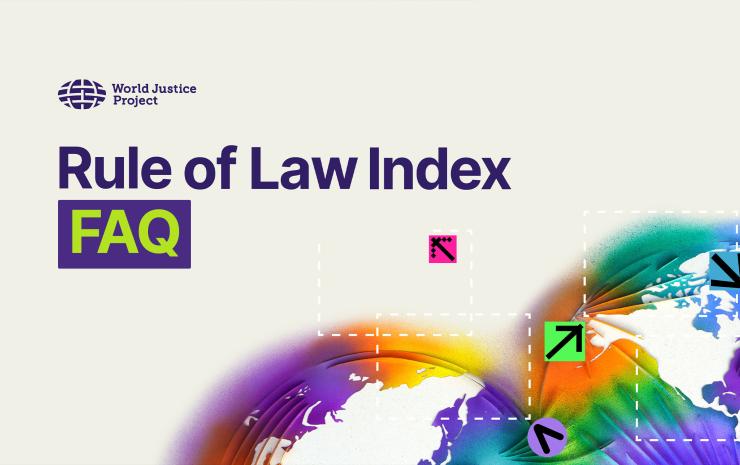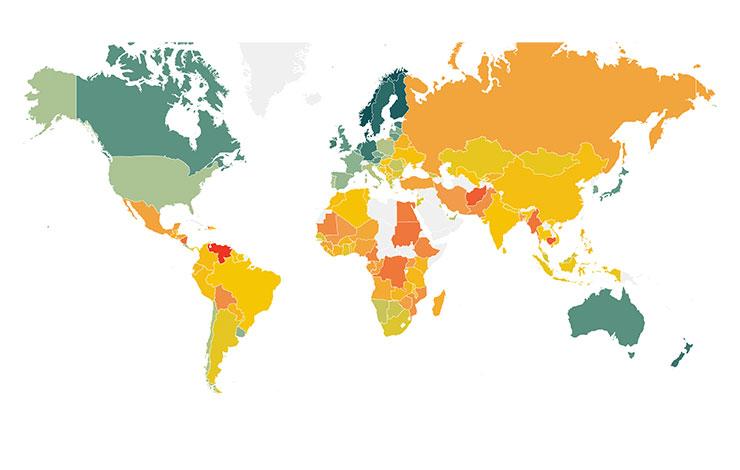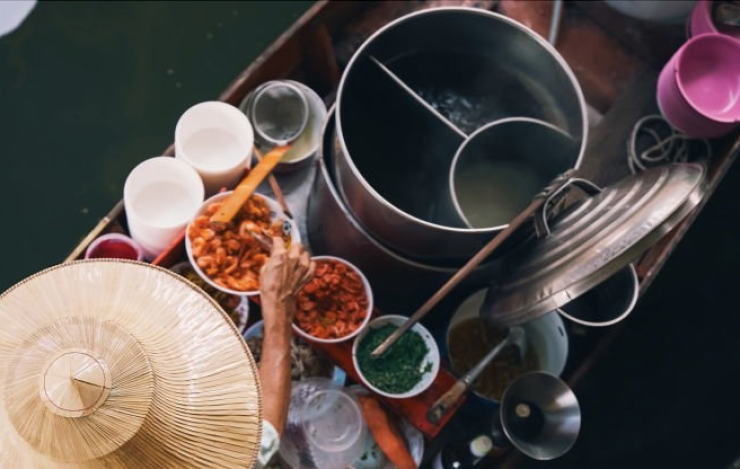
This post first appeared on the blog of the International Network to Promote the Rule of Law
Before its fall, Afghanistan’s Taliban regime’s strict enforcement of conservative legal and social norms severely limited the economic, social and political participation of Afghan women. Restrictions on freedom of movement, access to education, and civic participation, in addition to high rates of gender-based and domestic violence combined to make Afghanistan “the worst place in the world to be born a woman.”
After international intervention in 2002 led to the overthrow of the Taliban government, the Karzai regime installed new governance institutions such as the Ministry of Women’s Affairsand the Afghan Independent Human Rights Commission with specific mission to improve women’s status in Afghanistan. The situation for Afghan women has improved drastically in the last 12 years – particularly with regards to gains in women’s health and access to education. And, though improvements have been made in regards to women’s rights, the multitude of strategies initiated by Afghan and foreign NGOs toward ensuring women’s full enfranchisement and rights protection have struggled to make the structural changes that many sought in the immediate aftermath of the Taliban regime.

Researcher interviewing Afghan women in Daikundi Province, Afghanistan
In a newly released report, USIP researchers Erica Gaston and Tim Luccaro map how Afghan women seek justice when pursuing their rights and interests, along with the individual and collective barriers those women face. Understanding how women negotiate their rights and dispute resolution strategies within the familial and local sphere is critical to charting more effective pathways for women’s access to justice within formal justice institutions and informal mechanisms that are prevalent throughout the country. The report offers timely recommendations for finding Afghan-specific approaches to women’s justice needs, as actors both inside and outside Afghanistan express concerns about how the pace and progress will be sustained as Afghanistan transitions to full economic and security leadership. Some, like Afghan writer Mujib Mashal, fear that the reversals in rights adherence already taking place in far flung regions of the country herald a possible return to the old normal – even in the most progressive areas of the country.

Field researchers interviewing male community members in Daikundi Province, Afghanistan
The research highlights common points of entry for Afghan women including government and formal justice actors, informal and community actors, as well as family-based options. At each point of entry women are confronted with normative (cultural), consequential (ex: threat of reprimand for seeking justice), and practical barriers (ex: distance to legal centers).
The report documents the often tragic and heartbreaking stories of women’s continued struggle to find adequate protections within Afghanistan’s fractured justice landscape. In Herat, a sixteen-year-old woman was married to a seventy-year-old widower to pay off the debt of her father. After moving from her native province to Helmand, the woman was forced to live in her husband’s adult son’s house, where she and her children were subject to physical and sexual abuse at the hands of multiple members of the family. She recounts how she lost her home, and ultimately access to her children, after repeated attempts to access justice through familial and formal systems resulted in rejection from close relatives and broader community stigma. The actions of her in-laws were perceived as acceptable under traditional practices: even the local police became agents of the informal system, taking advantage of her poor knowledge of her rights and the processes used to secure them. Vulnerabilities at all three levels were compounded by a lack of legal education, and a systemic unwillingness to apply law towards protecting the rights and interests of the woman over those of her male family.

Young girls of Daikundi Province, Afghanistan
In an interview from Daikundi Province, a fourteen year old girl recounts how reporting her rape to her family resulted in attempts to marry her to her attacker. However, without male family members to support her claim, the other family refused, denying the involvement of the suspect, and the police were called. Intervention from the local mullahs failed to convince the other family to comply with the marriage request, and as a result the girl was taken from her home as part of a lengthy criminal investigation. Although the rapist was eventually jailed, the stigma the girl faced for going public in pursuit of justice left her feeling that her only chance for peace would be following through with the marriage.
Women’s Access to Justice in Afghanistan makes clear that these rights violations are not isolated incidents, but are interconnected concerns that, when unaddressed, snowball into significant legal and social problems. With no guarantee of legal protection, Afghanistan’s women are left in a precarious and uncertain position, where seeking assistance is as likely to intensify conflict and instances of abuse as to resolve it.
So what can be done? As the authors recommend, context will ultimately matter more than content, especially in isolated areas following the departure of coalition forces.
Recommendations to the Afghan Government:
- Expand procedural guidelines for line ministries (some exist with some ministries already) regarding engagement with non-state and community-based forums, with an emphasis on gender sensitivity and protection of vulnerable populations.
- Improve monitoring and enforcement mechanisms for formal justice providers to ensure that Afghan laws protecting women’s rights are applied in practice and that those who infringe those rights are punished. This will entail greater judicial review and oversight of decisions made through lower courts, or of charges brought by prosecutors that punish women for being victims of particular crimes such as rape, running away, or attempted adultery. The government should punish those state representatives who disabuse women of their legal protections including police, prosecutors and judges.
- Make greater efforts to ensure that women are easily able to gain access to tazkeras, marriage certificates, and other documentation of their citizenship, personal status, and economic rights.
- Support the expanded ability of MoWA and DoWA to deliver services for vulnerable or at-risk women or victims of violence, such as in-take counseling, victims’ support or case tracking, or simply expanded referral services to existing shelters and legal aid in the province.
Full recommendations to Afghan Government on page 52 of the report
Recommendations to Donor Community:
- Commit to long-term support for services for women, including multiyear funding for shelters, psychosocial services, the Afghanistan Independent Human Rights Commission (AIHRC), the Commission for the Prevention of Violence Against Women, and legal defense funds that support women.
- Develop programs to encourage greater women’s participation and representation in community forums and through community mechanisms.
- Before designing a programming intervention, conduct a context-based needs assessment of the target communities, paying attention not only to the supply side of justice services for women but also to gender-based and community barriers to accessing justice.Establish an iterative process of discussion with community leaders and individuals about women’s rights protections and disputes to help identify points of intervention in particular communities.
- Continue long-term support for education campaigns for both men and women about women’s rights. The results will emerge slowly and will be hard or impossible to measure in a single project cycle; donors should therefore be patient and base project metrics on longer time frames for normative and attitudinal changes associated with knowledge change.
- In relatively closed communities, emphasize gradually changing norms in the community and increasing overall community access to and trust in external mechanisms, rather than focusing only on women.
Full recommendations to donor community outlined on page 53 of the report
It will take concerted effort from all actors to protect the gains of the past decade, and create the conditions for improved outcomes for Afghanistan’s women.
Download the Full Report (English)
Download the Full Report (Dari) [check back soon]
All Photos By: Tim Luccaro/USIP
